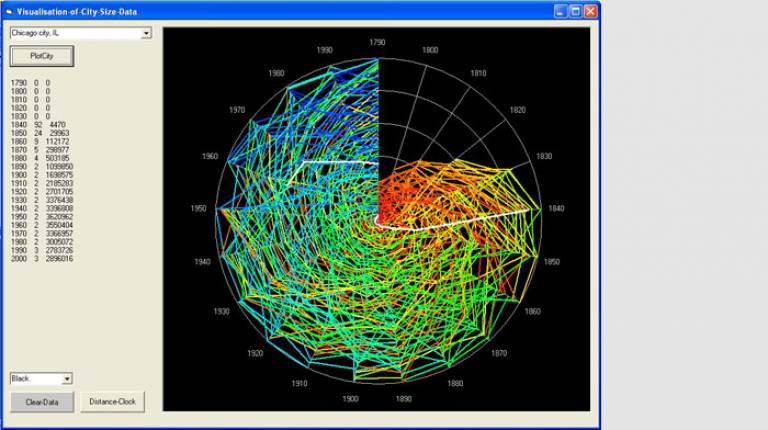MECHANICITY: Morphology, Energy & Climate cHANge In the CITY

Despite half a century of sustained research into the structure of cities, we still cannot answer the most basic questions of how their morphology is affected by the energy and income of their populations. We do not know if cities will become more compact or more spread out as energy usage changes due to global warming and as we switch to renewable energy sources.
What we need is much more robust theory with applicable computer models for forecasting such impacts. Many of the rudiments involving agglomeration economics, growth theory, trade, nonlinear dynamics, and fractal geometry have already been put in place with the complexity sciences providing a framework for this new social physics. But so far, energy has been strangely absent. Here we will embrace this role, thus generating theory and models able to address what cities will look like if current predictions of climate change are borne out.
We will organise the project into six related themes.
First, we will extend theories of urban morphology based on fractals and allometry to incorporate energetics in analogy to transport and network processes, drawing on the theory of metabolic scaling.
Second we will link these to statistical thermodynamics in spatial interaction and location modelling where energy, entropy, and accessibility are central.
Third we will aggregate our theories to enable comparative analyses of city shape, compactness, energy use, and density.
Fourth, we will explore different dynamic regimes building on self-criticality and bifurcation.
Fifth, we will make these ideas operational building on our London Tyndall Centre model, and on related work in Phoenix and Shanghai.
Last, we will construct a web-based collaboratory for posing 'what if' questions about climate change and energy balance using our theoretical and empirical models. This grant is funded as a European Research Council Advanced Award and runs from July 2010 to June 2015.
- People
Michael Batty
View Mike's profile
Send Mike an emailElsa Arcaute
Robin Edwards
Ed Manley
View Ed's profile
Send Ed an emailRoberto Murcio
Jiaqiu Wang
Sarah Sheppard
Send Sarah an emailDoctoral research students on Mechanicity are:
Pete Ferguson
View Pete's profile
Send Pete an emailMelanie Bosredon
View Melanie's profile
Send Melanie an email- Outputs
Batty, M. (2011) Commentary: When all the World's a City, Environment and Planning A 43(4) 765-772.
Batty, M. and Marshall, S. (2011) The Origins of Complexity Theory for Cities and Planning, in J. Portugali (Editor) Complexity Theory of Cities, Springer, Berlin, forthcoming.
Batty, M. (2010) Complexity in City Systems: Understanding, Evolution, and Design, in G. de Roo and E. A. Silva (Editors) A Planner's Encounter with Complexity, Ashgate Publishers Ltd, Farnham, UK, 99-121.
Benenson, I., and Hatna, E. (2011) Minority-Majority Relations within the Schelling Model of Residential Dynamics, Geographical Analysis 43, 287-305
Hatna, E, and Bakker, M. (2011) Abandonment and Expansion of arable land in Europe, Ecosystems 14 (5). 720-731.
Helbing, D. and Johansson, A. (2010) Cooperation, Norms, and Revolutions: A Unified Game-Theoretical Approach. PLoS ONE 5(10): e12530
Helbing, D. and Johansson, A. (2010) Evolutionary dynamics of populations with conflicting interactions: Classification and analytical treatment considering asymmetry and power, Physical Review E 81, 016112
- Impact
We list the main impacts of the proposed research in terms of the various work streams in the project:
The proposal first researches the state of the art in this broad domain presenting four distinct snapshots: our prior work and the key research challenges in theories of urban morphology which are based on fractal geometry and scaling; spatial interaction in terms of energy and entropy; alternative approaches to urban energetics which build on metabolism, flows and cycles; and then integrated assessment of the impacts of climate change in terms of the application of land use transport models.
We then develop our research methodologies. We start with the new theory of urban morphological energetics based on metabolism, and then turn to issues which arise with respect to spatial interaction concerning energy, temperature and thermodynamic potentials in city systems.
Ideas about the dynamics of urban growth in terms of rapid change and long term change temporal dynamics are then addressed, and next we define the need for comparative analysis of morphologies in terms of sprawl, compactness and optimum city size. We conclude with arguments about the need to provide an environment for prediction which supports long term scenario making and visioning.
These methodologies lead us to the definition of work packages around which we will organise our project. The six work packages that we define will be ordered as follows:
- A theory of urban morphological energetics built around scaling, allometry, networks, and agglomeration in which energy in transport is key to the metabolism of cities determining their form and density.
- The extension of existing theories of spatial interaction building on entropy, energy, transport cost and benefits, and accessibility linking in turn to urban morphological energetics.
- A comparative analysis of density, size, energy use, compactness, and sprawl across cities treated as aggregates, consistent with the social physics developed above.
- An explicit urban growth dynamics which incorporates discontinuities, bifurcations, tipping points, and self-organised criticality, built on the complexity science established elsewhere in the programme.
- Operational land use transport models which translate new forms of spatial interaction model, morphological energetics and their dynamics into methods for forecasting the impacts of energy changes in large cities, specifically London. This builds on our work with the Tyndall Consortium and it will be contrasted with models being built by other groups for Shanghai and Phoenix.
- A web-based model collaboratory in which users will be able to explore hypothetical urban scenarios based on both idealised models which emerge from new theory and operational models developed for empirical forecasting.
 Close
Close

